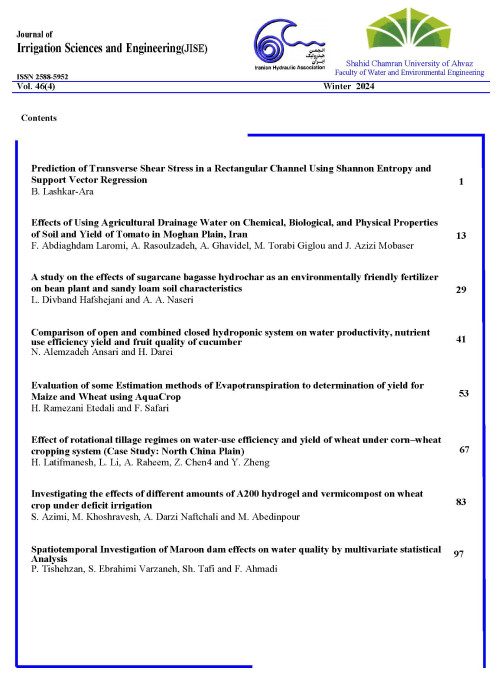Groundwater Modeling of Astaneh-Kuchesfehan Aquifer
More efficient decisions in groundwater problems can be improved by increasing modeling accuracy. The mesh-free numerical model is a way to achieve this goal. In recent years, various mesh-free methods for modeling groundwater have been developed. This paper aims to develop groundwater models by mesh-free methods, including Analytical Element Method (AEM) and Point Collocation Method (PCM). The AEM is an idealistic perception of the linear superposition concept (Strack, 1987). The PCM uses a set of points scattered within the domain of the problem that transforms the governing partial differential equations into algebraic equation systems and does not need any predefined mesh (Liu & Gu, 2005).
Astaneh-Kuchesfahan plain is one of the agricultural centers in the province of Gilan located between Tehran and the southern basin of the Caspian Sea in the north part of Iran. The geographical location of the Astaneh-Kouchesfahan aquifer is shown in Fig. (1).In this research, analytic element and point collocation mesh-free methods are used for groundwater modeling. The analytical element method is essentially a version of the superposition techniques. This method uses the exact analytical functions, and it doesn't need mesh-dependent interpolation functions (Fitts, 2012 ). Some points are distributed on the computational domain in the point collocation method, and the shape functions are created to solve the governing equation. This method is used to solve many partial differential equations with boundary conditions (Liu & Gu, 2005). The flow models are applied for groundwater modeling of the Astaneh-Kouchesfahan aquifer, and their results are compared. Particles Swarm Optimization (PSO) algorithm is used for the calibration of flow models. The models are developed by Python Object-Oriented Programming (OOP) language. The results of the AEM flow model based on the equipotential contour lines are shown in Fig. (2). Figure (3) also shows the nodal arrangement in the problem domain for the PCM model and geometry of the support domain.
- حق عضویت دریافتی صرف حمایت از نشریات عضو و نگهداری، تکمیل و توسعه مگیران میشود.
- پرداخت حق اشتراک و دانلود مقالات اجازه بازنشر آن در سایر رسانههای چاپی و دیجیتال را به کاربر نمیدهد.


